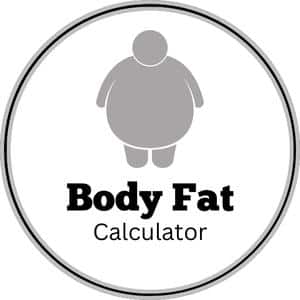Note: Body Fat tool is in progress, therefore results can be varied.
Demystifying Body Fat Calculators: How Do They Work?
Body fat calculators have become invaluable tools for those on a journey to better health and fitness. These calculators provide an estimate of your body fat percentage, a key metric in understanding your overall health and wellness. In this article, we’ll explore the world of body fat calculators, including the methods they use for calculation and their significance in health and fitness.

What is Body Fat Percentage?
Body fat percentage is the proportion of fat tissue in your body relative to your total body mass. It’s a more comprehensive measurement than simply tracking your weight because it takes into account the difference between fat and lean tissue. Maintaining a healthy body fat percentage is important for overall well-being.
The Importance of Body Fat Percentage
Understanding your body fat percentage is crucial for several reasons:
- Health Assessment: It’s a better indicator of health than weight alone. High body fat levels can be associated with health issues such as heart disease, diabetes, and hypertension.
- Fitness Goals: Body fat percentage can help you set realistic fitness goals. Whether you want to lose weight, gain muscle, or improve endurance, knowing your body fat percentage is essential.
- Progress Tracking: Tracking changes in body fat percentage allows you to monitor the effectiveness of your fitness and nutrition routines.
Methods for Calculating Body Fat Percentage
Body fat percentage can be calculated using various methods, each with its own level of accuracy and complexity. Here are some common methods employed by body fat calculators:
1. Skinfold Calipers
Skinfold calipers measure the thickness of subcutaneous fat (the fat just beneath the skin) at specific sites on the body. These measurements are then used to estimate total body fat percentage. While this method is relatively simple, it requires precision in skinfold measurements.
2. Bioelectrical Impedance Analysis (BIA)
BIA devices send a low-level electrical current through the body. The resistance encountered by the current is used to estimate body fat percentage. BIA is widely available and relatively easy to use, but factors like hydration levels and food intake can affect its accuracy.
3. Dual-Energy X-ray Absorptiometry (DXA)
DXA scans use X-ray technology to measure bone density, lean tissue, and fat mass. It’s considered one of the most accurate methods for body fat assessment, but it’s typically performed in medical settings due to its cost and complexity.
4. Hydrostatic Weighing
Hydrostatic weighing, also known as underwater weighing, involves measuring body density by submerging a person in water. This method is highly accurate but less practical for everyday use.
5. Body Fat Calculators and Formulas
There are many body fat calculators and formulas available online. These calculators often use measurements like weight, height, age, and sometimes waist circumference to estimate body fat percentage. One widely used formula is the Jackson-Pollock method.
The Jackson-Pollock Method
The Jackson-Pollock method is a common formula used by online body fat calculators. It estimates body fat percentage based on skinfold thickness measurements taken at multiple sites on the body. The formula incorporates age and gender for more accuracy. Here’s a simplified version:
Body Fat Percentage = 0.29288 * (Sum of Skinfold Thicknesses) – 0.0005 * (Sum of Skinfold Thicknesses)^2 + 0.15845 * Age – 5.76377
Using a Body Fat Calculator
Using a body fat calculator is relatively straightforward. You input your data, which typically includes your age, gender, weight, height, and sometimes waist circumference. If the calculator uses the Jackson-Pollock method, it may also require skinfold thickness measurements. The calculator then applies the relevant formula to estimate your body fat percentage.
Conclusion
Body fat calculators offer valuable insights into your health and fitness progress. While they may not provide absolute precision, they serve as useful tools for setting goals and tracking changes over time. Remember that no single method is perfect, and results may vary between calculators. For the most accurate assessment of body fat percentage, consider consulting with a healthcare professional or using more advanced methods like DXA scans. Nonetheless, body fat calculators remain valuable resources on your journey to a healthier and more fit lifestyle.



